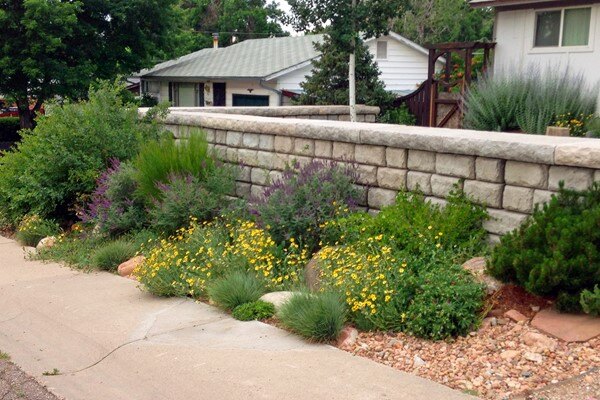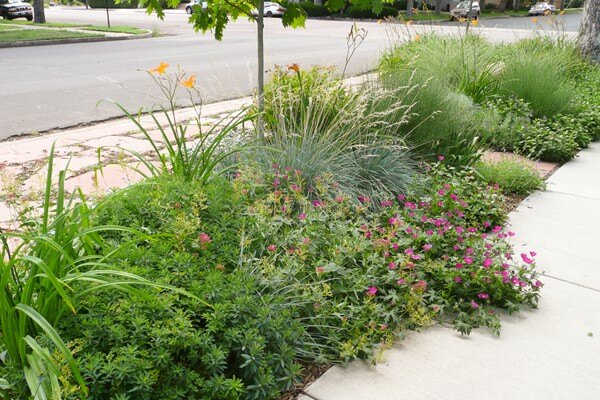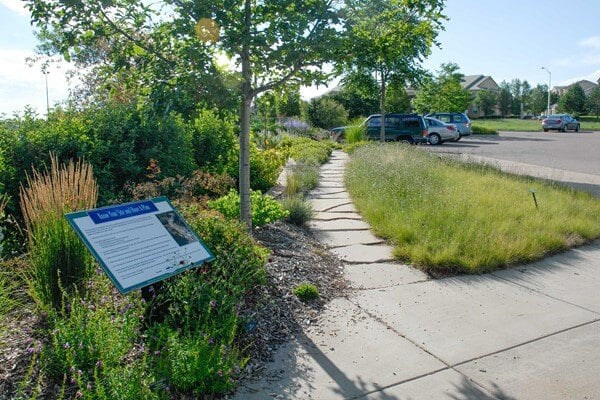Winecups
Winecups is a native, low growing, spreading perennial flower that blooms throughout most of the summer.
It has deep green leaves spaced along the stems. The striking wine-colored flowers have five petals that grow in the shape of a cup. It grows well in a variety of soils and is useful for slopes and the edges of retaining walls since its long stems gracefully drape over rocks and walls. Little to no maintenance is required.
This is an excellent plant with nice foliage, excellent flowers, and drought-tolerance. Rabbits like to eat it when given the chance.
.jpg)
.jpg)
.jpg)
.jpg)
.jpg)
.jpg)
.jpg)
.jpg)
.jpg)
.jpg)
Winecups
Winecups is a native, low growing, spreading perennial flower that blooms throughout most of the summer.
It has deep green leaves spaced along the stems. The striking wine-colored flowers have five petals that grow in the shape of a cup. It grows well in a variety of soils and is useful for slopes and the edges of retaining walls since its long stems gracefully drape over rocks and walls. Little to no maintenance is required.
This is an excellent plant with nice foliage, excellent flowers, and drought-tolerance. Rabbits like to eat it when given the chance.
Plant details
Botanic Name
Callirhoe involucrata
Pronunciation
kal-ir-OH-ee in-vol-yoo-KRAY-tuh
Mature Height
5 to 8 in.
Mature Spread
20 to 30 in.
Water usage
One Droplet: Water twice per month or less, once established.
Two Droplets: Water about once per week, once established.
Three Droplets: Water about twice per week, once established.
Flower Color
pink-magenta
Bloom time
spring through late summer
Colorado Native
Yes
Natural Habitat
central United States
Light Requirements
sun, part shade
Cold Hardiness
USDA zones 3-9
Elevation Limit
hardy to 8,000 ft.
Performance
Winecups are an excellent plant for Colorado Springs, but have been continuously eaten by rabbits at the Mesa Water Wise Demonstration Garden.
There is a nice group of winecups growing at the Cottonwood Creek Garden. Because of the spreading nature of the plants, they cascade over rocks, which is lovely.
When they get regular moisture, they grow very wide and can become unruly. Plant it in an area where it will be watered once per week or less once established.
Maintenance
Cut old growth to ground in early spring before new growth starts. Poppy mallow has a large taproot and will not transplant well.
See in a landscape
Narrow strips like this can be a tough place for grass to grow because of the heat from the surrounding concrete and the difficulty of watering a narrow area. That's why these plants are a great choice for an area like this. Not only do they like the extra heat from the wall and sidewalk, but they enjoy being kept on the dry side. The yellow-blooming chocolate flower will thank you for not over-watering by blooming all season long! Many of the plants found in this garden are native to Colorado.
This downtown parkway adds beauty to this large parkway with a garden of xeric perennials and a young shade tree. Since the median is wide, there was room enough for a garden as well as a flagstone pathway that creates more space for pedestrians and parking traffic.



.jpeg)
.jpeg)
.jpeg)
.jpeg)
.jpeg)
.jpeg)
.jpeg)
.jpeg)
.jpeg)
.jpeg)